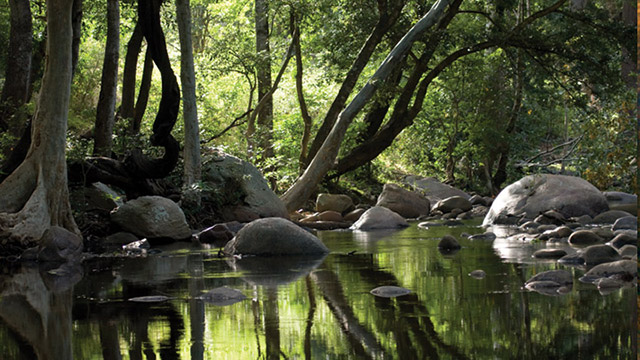Nestled in the western part of the state of Kerala, India, Chinnar Wildlife Sanctuary is a pristine haven for nature enthusiasts and wildlife lovers. Covering an expanse of approximately 90 square kilometers (34.75 square miles), this protected area is known for its diverse flora and fauna, unique ecosystems, and captivating landscapes. In this article, we will explore the wonders of Chinnar Wildlife Sanctuary and its significance in conservation and eco-tourism.
Geographical and Ecological Diversity
Chinnar Wildlife Sanctuary is located in the rain-shadow region of the Western Ghats, bordering Tamil Nadu. Its diverse geography and ecosystems include:
- Dry Forests: Chinnar is characterized by dry thorn forests, which are adapted to the region’s arid climate. These unique forests harbor a variety of plant and animal species specially adapted to survive in dry conditions.
- Riverine Ecosystems: The sanctuary is crisscrossed by seasonal rivers and streams, creating a mosaic of habitats that support a rich array of wildlife.
- Sholas: At higher elevations, you can find shola forests, a type of tropical montane forest unique to the Western Ghats. These shola-grassland ecosystems are crucial for water conservation.
Flora and Fauna
Chinnar Wildlife Sanctuary is home to a remarkable diversity of wildlife, including:
- Endangered Species: The sanctuary is one of the few remaining habitats of the endangered Indian star tortoise and the grizzled giant squirrel.
- Elephants: Chinnar is known for its population of wild Asian elephants. It’s not uncommon to spot these gentle giants while exploring the sanctuary.
- Leopards and Tigers: While sightings of these big cats are rare due to their elusive nature, Chinnar is known to be a habitat for leopards and occasional tigers.
- Avian Diversity: Birdwatchers will be delighted by the sanctuary’s avian diversity, with over 200 species of birds, including the threatened yellow-throated bulbul and the great pied hornbill.
- Reptiles: In addition to the Indian star tortoise, Chinnar is home to various reptile species, including the Indian python and various species of snakes and lizards.
Activities and Experiences
Visitors to Chinnar Wildlife Sanctuary can engage in various activities and experiences, including:
- Guided Nature Walks: Expert naturalists and guides lead visitors on guided treks and nature walks, sharing insights about the sanctuary’s flora and fauna.
- Trekking and Camping: There are trekking trails that offer opportunities to explore the sanctuary’s diverse landscapes. Camping is also available for those who wish to immerse themselves in the wilderness.
- Visit the Thoovanam Waterfalls: A visit to the Thoovanam Waterfalls is a highlight of any trip to Chinnar. The falls are particularly beautiful during the monsoon season.
- Eco-Tourism Programs: Chinnar offers eco-tourism programs that promote responsible and sustainable tourism practices, ensuring minimal impact on the environment.
Visiting Chinnar Wildlife Sanctuary
- Location: Chinnar Wildlife Sanctuary is situated in the Idukki district of Kerala, India, near the town of Marayoor. It is approximately 60 kilometers (37 miles) away from the popular hill station of Munnar.
- Entry Fees: Visitors are required to pay entry fees, which may vary for different activities and categories of visitors. Check with local authorities for the most up-to-date information.
- Best Time to Visit: The best time to visit Chinnar Wildlife Sanctuary is during the post-monsoon and winter months, from September to February, when the weather is pleasant and wildlife sightings are more frequent.
Conservation and Sustainability
Chinnar Wildlife Sanctuary is committed to conservation efforts and the preservation of its unique ecosystems. Sustainable tourism practices are encouraged to minimize the impact of visitors on the environment. These efforts aim to ensure that future generations can continue to enjoy the sanctuary’s natural beauty and biodiversity.
Conclusion
Chinnar Wildlife Sanctuary is a treasure trove of biodiversity, offering a captivating blend of dry forests, riverine ecosystems, and montane forests. It is a destination that beckons travelers to immerse themselves in the serenity of nature, explore diverse landscapes, and witness the wonders of wildlife in their natural habitat. A visit to Chinnar Wildlife Sanctuary is not just a journey through Kerala’s ecological richness but also an opportunity to support conservation and responsible tourism in this remarkable sanctuary.

